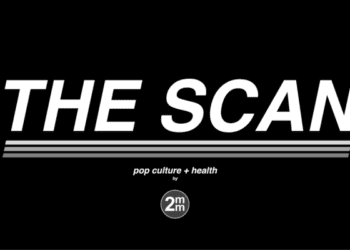Patient and prescription factors associated with overdose after initiating opioids
1. Opioid overdoses were more frequent in those aged ≥75 or 18-24, who were male, Black, or had non-commercial insurance. Non-fatal opioid overdoses were more common in participants with comorbidities, prescribed long-acting opioids, received 6 opioid prescriptions in 6 months, or who filled opioid prescriptions at ≥3 pharmacies.
2. More opioid overdoses occurred in participants prescribed oxycodone or tramadol or who had a prescribed benzodiazepine prescribed within 6 months of initiating opioids.
Evidence Rating Level: 3 (Average)
Study Rundown: Despite the opioid epidemic decreasing prescribing, opioid medications are still used heavily in the treatment of severe pain. Long-term dependence, overdose, and death are risks of prescribing opioid medications. Prescribing greater morphine milligram equivalents (MMEs) is associated with an increased likelihood of patients becoming opioid-dependent. Yet little is known about the association between opioid overdose and drug indications, patient comorbidities, and patient social determinants of health as previous studies only use prescription filling databases. This study connected health and insurance databases to assess the patient factors and prescription factors associated with opioid overdose. Medicare fee-for-service patients were excluded because of data use agreement restrictions. Opioid-naïve patients were defined as having only 1 opioid index prescription (the first prescription in 2015 for 6 months), who were not prescribed buprenorphine, and who had no opioid prescriptions, hospitalizations, or emergency department visits in the year before the index opioid prescription. Of the 236,921 patients who started a new opioid during 2015 and were followed for 33.7±13.7 months (56.5% women; 73.6% White; 41.8% had commercial insurance), 0.3% experienced an overdose. Non-fatal opioid overdoses occurred 120.6 times per 100,000 person-years. Non-fatal opioid overdoses were more common in the subgroup of participants who had a history of comorbid substance use disorder or psychosis, had medical comorbidities, were prescribed long-acting opioids, received 6 opioid prescriptions in 6 months, or who filled opioid prescriptions at ≥3 pharmacies. Participant factors that increased the risk of opioid overdose included age ≥75 or 18-24, being male, being Black, and having non-commercial insurance. Prescription factors that increased the risk of opioid overdose included being prescribed oxycodone or tramadol compared to codeine or filling a benzodiazepine prescription within 6 months of starting opioids. This study is limited as a retrospective cohort by reported variables. Specifically, important variables on the social determinants of health like education and income were not reported, so could not be analyzed and missing ethnicity data needed to be predicted. This study excludes people using Medicare fee-for-service and those without insurance because it relies on insurance claims databases, limiting its generalizability. Additionally, these results may not be generalized outside of Oregon. Finally, these data were indexed to 2015, which may not reflect current practice as the Centre for Disease Control updated the prescribing guidelines in 2016.
Click to read the study in JAMA Network Open
Relevant Reading: CDC Guideline for Prescribing Opioids for Chronic Pain-United States, 2016
In-Depth [retrospective cohort]: Data on opioid prescription filling were linked to data on fatal overdose, non-fatal overdose, and patient demographics including comorbidities by connecting the Oregon prescription drug monitoring program (PDMP), the Oregon Vital Records death certificates, the Oregon hospital discharge database, and the voluntary insurance All Payer All Claims Data (APCD) of Oregon database, respectively. Patient and prescription factors were compared to identify if there were associated with fatal/non-fatal opioid overdoses. 29.1% of the participants had ≥1 pain condition and 45.0% had ≥1 comorbidity. Hydrocodone (59.2%) was the most prescribed opioid. Long-acting opioids were rarely prescribed (0.3%) and most prescriptions were for ≤7 days supply. Most patients were on 1 or 2 opioid prescriptions (81.9%). 55.7% of the cohort received ≥300 MME. 2.6% of patients received opioids from ≥3 pharmacies and 9.7% received opioids from ≥3 prescribers. Non-fatal opioid overdoses occurred 120.6 times (95% CI = 111.8-130.2) per 100,000 person-years. The non-fatal opioid overdose rate was higher in some subgroups, including being 626.4 (95% CI = 515.4-761.3) per 100,000 person-years in those with a history of comorbid substance use disorder, 466.4 (95% CI = 343.4-633.4) per 100,000 person-years with comorbid psychosis, 734.8 (95% CI = 417.3-1294.0) per 100,000 person-years in prescribed long-acting opioids, 395.3 (95% CI = 323.3-483.4) per 100,000 person-years in those who filled 6 opioid prescriptions in 6 months, and 387.5 (95% CI = 296.1-507.2) per 100,000 person-years in those who filled opioid prescriptions at ≥3 pharmacies. The risk of opioid overdose was greater in those ≥75 years old (adjusted hazard ratio [aHR] = 3.22; 95% CI = 1.94-5.36) and 18-24 years old (aHR = 1.80; 95% CI = 1.36-2.39), compared with those aged 35-44 years. The risk of opioid overdose was greater in men (aHR = 1.29; 95%CI, 1.10-1.51) than women. Black patients were at a higher risk of opioid overdose (aHR = 1.55, 95% CI = 1.12-2.15) compared with White patients. Patients eligible for both Medicaid and Medicare Advantage (aHR = 4.37, 95% CI = 3.09-6.18), Medicaid (aHR = 3.77, 95% CI = 2.97-4.80), or Medicare Advantage (aHR = 2.18, 95% CI = 1.44-3.31) were at a high risk of opioid overdose compared to those with commercial insurance. Finally, participants with a substance use disorder (aHR = 2.74, 95% CI = 2.15-3.50), depression (aHR = 1.26, 95% CI = 1.03-1.55), 1 or 2 comorbidities (aHR = 1.32, 95% CI = 1.08-1.62), or ≥3 comorbidities (aHR = 1.90, 95% CI = 1.42-2.53) were at a higher risk of overdose. Patients who were opioid-naive were at a greater risk of overdose if they filled a prescription for oxycodone (aHR = 1.70, 95% CI = 1.04-2.77) or tramadol (aHR = 2.80, 95% CI = 1.34-5.84) compared to codeine, or if they filled a benzodiazepine prescription in the first 6 months after starting opioids (aHR = 1.06, 95% CI = 1.01-1.11), or took concurrent benzodiazepine (aHR = 2.11, 95% CI = 1.70-2.62). Opioid-naïve participants were at a greater risk if they got their prescriptions ≥3 pharmacies (aHR = 1.38, 95%CI = 1.09-1.75).
Image: PD
©2022 2 Minute Medicine, Inc. All rights reserved. No works may be reproduced without expressed written consent from 2 Minute Medicine, Inc. Inquire about licensing here. No article should be construed as medical advice and is not intended as such by the authors or by 2 Minute Medicine, Inc.






